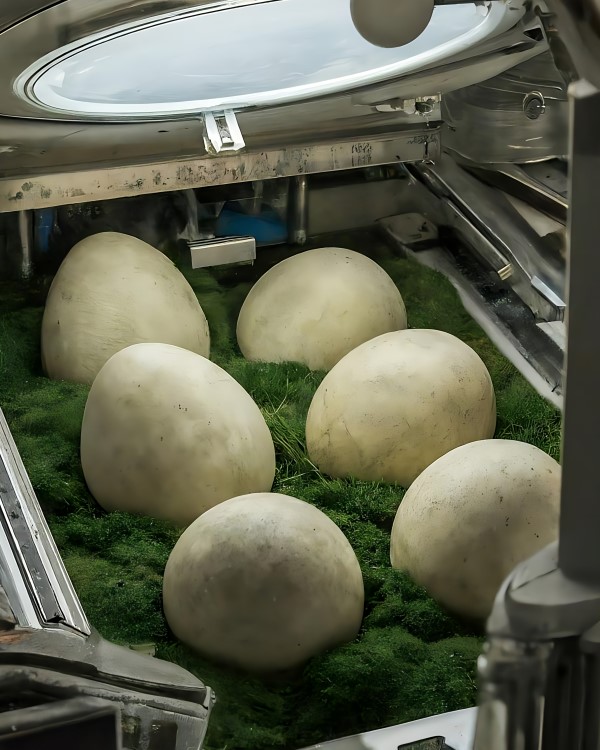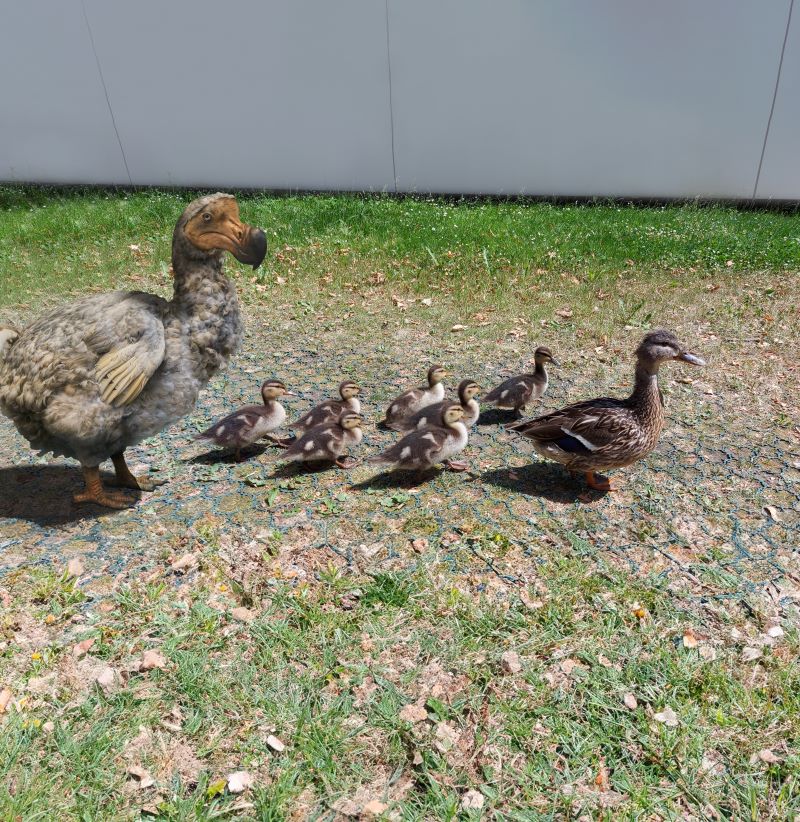April 1, 2025
Scientists Revive Extinct Dodo
Revolutionary breakthrough: 300 years after extinction, the Raphus species returns to life
This article is a work of science fiction and was published on April Fools’ Day.
Always keep a critical mind to distinguish between fake news and scientific fact.
In a landmark achievement that redefines the boundaries of life, researchers at the Institute of Science and Technology Austria (ISTA) have successfully revived the extinct dodo bird (raphus cucullatus), once a symbol of lost biodiversity. Combining cutting-edge genome editing techniques with decades of evolutionary research, the multidisciplinary team has brought back the flightless bird that last walked the Earth more than three centuries ago. This milestone in de-extinction efforts opens new avenues for the preservation of endangered species worldwide.

Following recent progress in the de-extinction of the woolly mammoth, scientists at ISTA have achieved the unthinkable: in an interdisciplinary venture, they have resurrected the Dodo (raphus cucullatus). Contrary to intuition, the missing piece of the puzzle did not come from biology, but from astrophysics and mathematics.
Georgios Katsaros, ISTA Vice President for Scientific Resources, applauds the research teams: “This remarkable synergy of astronomy, maths, AI, and biology positions ISTA and its facilities at the forefront of pioneering science.”
ISTA President Martin Hetzer adds, “Undoubtedly, the scientific achievement of our generation. As a researcher investigating the biological factors of age, I wish the new dodo line: May it – this second time – live long and prosper!”
Dead as a dodo? No more!
The dodo was a flightless, peaceful bird that lived exclusively on Mauritius, a small island in the Indian Ocean. It has taken on a strange celebrity status, becoming a poster child for extinction. “There have always been a lot of questions among experts about what kind of bird the dodo was and how it lived,” says Nick Barton, evolutionary geneticist at ISTA. “What we did know: It ate mostly fallen fruit, seeds, crustaceans, and insects. It had no significant predators—until Europeans arrived and deep-fried delicious dodos into extinction by the end of the 17th century.”
The dodo became particularly famous because it was “the first species whose extinction was conceded—in writing—to have been caused by humans” (Stearns & Stearns, 1999). It challenged the Roman-Catholic philosophy that only God possesses the power to create and undo species. “Now, the dodo is also the first species to have ever been revived, now a symbol of questionable re-creation!” concludes Assistant Professor Lora Sweeney, whose research group contributed its knowledge of leapfrogging to this discovery.
The dodo or the egg? – A solution to an age-old problem
“Our research on ‘zombie stars’ provided the advanced mathematical modeling to understand death’s two-facedness,” says astrophysicist Ilaria Caiazzo. “Physicists have already investigated similar notions with dead-and-alive cats, now we have applied it to birds.” Based on this model, the research group of Alexander Bronstein leveraged machine learning to design protein structures that resembled the dodo genome. After processing it on the high-performance cluster, a genetic code resulted, which the in-house Scientific Service Units (SSUs) then synthesized. Ultimately, the dodo DNA was injected into the ovum of a regular chicken. “It´s settled: the egg was first,” concludes Barton.

The protocol called the “dodo-todo” list includes interdisciplinary work by Professor Gašper Tkačik. His group developed a formula for the optimal developmental path for a chicken egg to shift to the trajectory of a dodo. “Many roads lead to the dodo,” says Tkačik. “Unless you want to be in deep doodoo, better follow the do’s and don’ts to get a dodo.”
Two groups were involved in growing the embryo: the Heisenberg group tracked the morphogenesis of the embryo in a controlled laboratory environment, and the Kicheva group took it from there, growing the tissue. “After the tiniest egg ever created, we didn’t expect yet another br-egg-through so soon!” shares Kicheva. The first to witness rebirth was Alicia Michael, an expert in biological timekeeping. “The shell cracked at the exact moment of the egg timer and out came this reawakened species, a disoriented dodo hatchling, alive and well. What a sight!”

The Future of Revival
“Of course it would be spectacular to revive the 12m-long extinct titanoboa, or terror birds, or the cave lion”, says Gaia Novarino, Executive Vice President. In her role as Vice President for Science Education, she adds, “But with the opening of the VISTA Science Experience Center in fall, we worry about the negative impact of hostile predators on groups of children on campus.”

Therefore, next in line of de-extinction is the Stellar sea cow (hydrodamalis gigas). The peaceful ocean creature will co-exist harmoniously below the ducks of the ISTA campus pond. The transfer plans come from the – now literal – incubator xista innovation. It intends to expand the Institute’s petting zoo. “Families visiting the VISTA Science Experience Center will be able to pet their favorite reborn species: an Irish elk, a zebra-like quaggas, an ostrich-like moa, or, of course, plenty of dodos.”
“Naturally, one thinks of other life forms that could be brought back,” says co-author Sweeney, referring to Neanderthals. “For us, that is out of question. The moral implications are just gruesome … but it would be fascinating. Revival would prove that humanity could continue to destroy the planet, go extinct as species, and be revived later—assuming some life form will be interested in bringing back war-waging and mansplaining Homo sapiens.”
If you enjoyed this text, follow our channels for more entertaining science content. If you believed it, however, please consider joining our Science Bootcamps and other fake debunking programs offered by VISTA Science Experiences. Happy April Fools’ Day!



